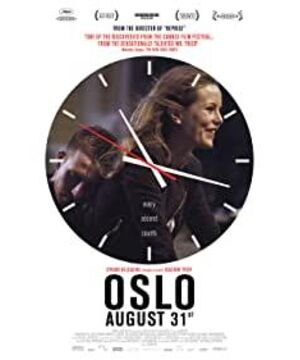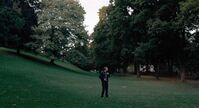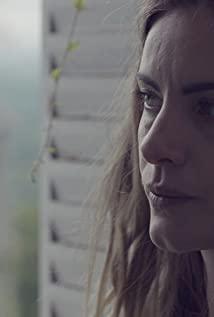Joachim Tier’s film "Oslo, 31. august", and his last work "Reprise" There are many places in the same line in the style, which seem to be the delicate reproduction of his personal life experience and mental journey, like a delicate and sensitive mood note, but also like the hesitation and pathfinder of a lost person. It is just "Oslo, August "Wei Young" makes loneliness and despair even colder.
The film is adapted from the French novel "Inner Fire". The director Tyre seems to be deeply influenced by French filmmakers. There is always a taste of French film in the film circulation. For example, Rohmer's early filming of the streets of Paris, France was mentioned He was introduced into this Norwegian film to reproduce the street scenes of Oslo, so he also commented on the film, "Although it is also a story that tells a night, although it is also a chatty film, this film and "Before Sunrise" is still very different. In terms of texture and theme, it is closer to French movies."
Audiences who have watched "Ensemble" will also find that this film is like a sequel to "Ensemble", like the journey of a young cultural man at two different times. Tyre once said that the protagonist of the film has many similarities with him. In this way, it seems that these two films can be regarded as the inner portrayal of Tyre. They are externalized different periods of his inner fluctuations. Tyre uses his simple but sad light and shadow technique in the travels of the protagonist Anders. In a short day, looking for the precarious sense of existence and the meaning of life, while the situation and mood are constantly being dragged to bear the bottom line, it also creates Anders’ emotions and surrounding atmosphere in a subtle and cold white. nature.
The film sets the background of the story in a quiet city, under the quiet and peaceful sky of Northern Europe, with slow-moving shots, quietly narrating the beauty and loneliness of a city, the loneliness and hopelessness of a person. Although the plot is slightly weak, the psychological description is delicate and rich, the technique is restrained and simple, and many details are full of highlights. It is not difficult to see the director's intention to show the character of the city of Oslo. The Hollywood Reporter also believes: "The filming of this film is very meticulous, and all the details show the characteristics and character of the city of Oslo." At the same time, this film The excellent sound design highlights the plight of the characters and the uniqueness of Oslo, and plays a role of blending and inclusiveness to the narrative.
The film also reflects the reality of European society from one side. Under the conditions of material and spiritual growth and survival, the loss of a sensitive and fragile young cultural person is very representative. Following his travels, the audience experienced a kind of loneliness and helplessness that could not be eliminated. On the first day of returning to normal life, the young drug-related person could not find any place to interface with society and ordinary people, and was banished. The sense of isolation and helplessness came quietly and continued to ferment, as if he had never left him, but he could only silently lick the loss and pain in his heart, the drug addiction in the past, the loneliness and helplessness of today , The blur and absence are exactly the same.
Although the whole film does not over-render the dark colors, it is always filled with a gloomy atmosphere. It seems that after all, there is no hope and meaning of life. From the beginning, the film presents a suicide scene calm and familiar, as if what Anders did when he walked into the water was taken for granted, and the sense of depression and anxiety permeated in it was very real, just like gloomy. Normality is average.
Anders' travels on this day did not become an opportunity for him to return to social life, but instead made him firm his conviction for suicide. A large part of Anders’ despair comes from his desire to return to ordinary life. As a person with special experience, his desire tends to be hopeless in reality, and he must bear the status quo that he cannot communicate. Circumstances such as the editor-in-chief of magazines who are not speculative, relatives who cannot meet, and girlfriends who do not answer the phone all make Anders' return gradually evolved into the final struggle.
The actor who plays Anders is also called Anders. Anders Danielson Lee, who has been playing piano since he was young, has a unique literary temperament, which is very suitable for interpreting the literary and artistic elements in the blur, and he has played the role in "Replay" Insane literary youth. In addition to the prominence of the opening suicide scene, the moment the theft was discovered at the party can better reflect Anders' confusion and confusion. When sitting alone in the cafe listening to the conversations of the people around, Anders' expression is unforgettable. The surrounding noise reflects the envy, loneliness and helplessness of the lonely. The fit of Li and this character makes people admire Tyre's insight.
Towards the end, Anders refused to jump into the swimming pool to play with the girl, his clear eyes seemed to announce his decision. John Steinbeck once said: "A sad heart can make people die quickly, much faster than bacteria." The sad and literary Anders is destined to choose the ultimate way of disappearing, a close-up of the needle on his arm. It shows a kind of hopeless determination and loneliness, but also a heart-wrenching compromise and submission.
(Magazine draft)
http://nicolew.blog.hexun.com/77581245_d.html
View more about Oslo, August 31st reviews









